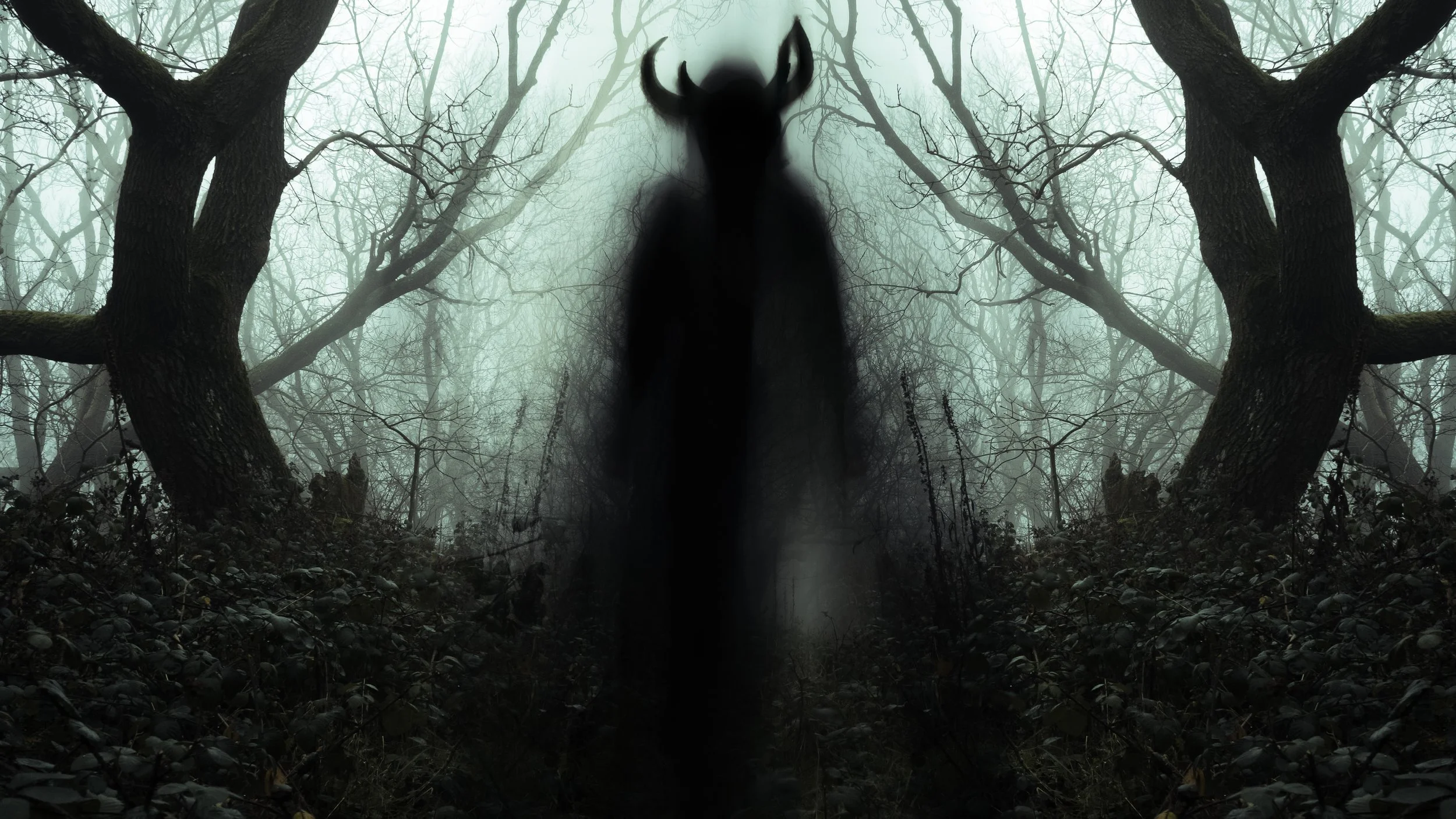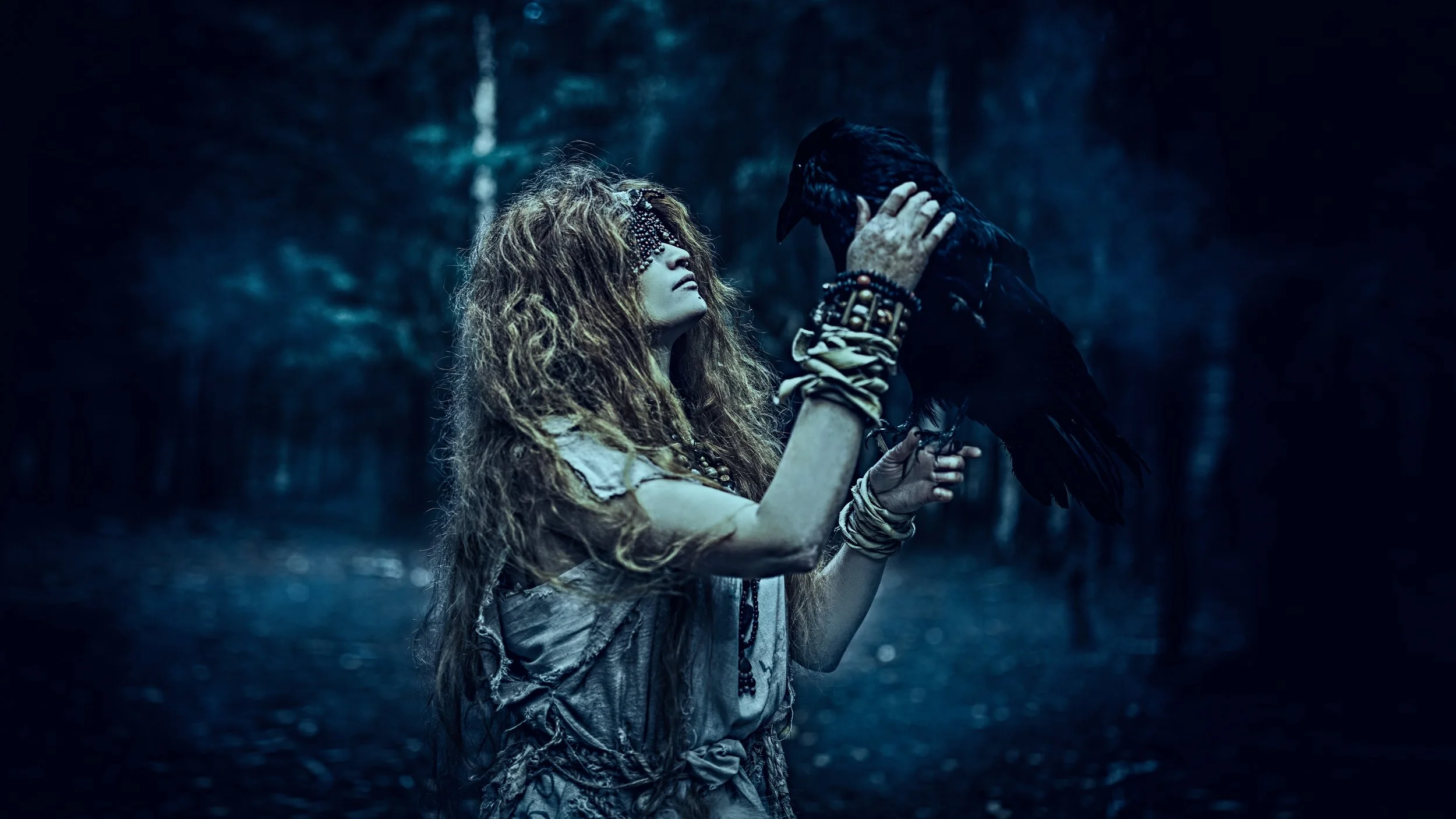Day 9: The Descent: Walking with the Dark Goddesses of Celtic Myth
“She is not the end. She is the keeper of thresholds, the one who turns endings into beginnings.” — Unknown
Every turning of the wheel calls us downward before we rise again. Samhain is that descent — the deep breath before winter’s sleep — when the Dark Goddess walks among us.
She is the one who gathers the dead, the one who teaches that decay feeds life, the one who rules the shadow side of the cycle.
Who Is the Dark Goddess?
The Dark Goddess isn’t one name or face. She is a current that flows through myth after myth — Celtic, Greek, Norse, and beyond.
In the Celtic world, she appears most vividly as the Morrígan, the Phantom Queen of battle and prophecy, and as the Cailleach, the Veiled One who shapes the land and commands the storms.
Each of these goddesses carries the same truth: that life and death are not enemies but companions.
The Morrígan: Death and Sovereignty
The Morrígan is often remembered as a goddess of war — but her true realm is transformation.
In Irish myth, she determines who will live and who will fall in battle, yet her power lies not in destruction, but in sovereignty. She is the spirit of the land itself, deciding who is worthy to rule it.
Her trinity of forms — Badb, Macha, and Nemain — remind us that endings are never final; they are thresholds to renewal. As author Stephanie Woodfield writes:
“The Morrígan is a goddess of death, yes, but death as a sacred act — death that makes way for rebirth.”
At Samhain, when the veil thins, we meet her at the crossroads. She does not ask us to cower — she asks us to face what must die within us: old patterns, fears, griefs. To meet her gaze is to reclaim our power.
The Cailleach: Winter’s Veil and the Stillness Before Rebirth
Her name drifts through the highlands like wind over stone — the Cailleach (KAL-yukh in Irish, KAI-lukh in Scottish Gaelic*) — the Veiled One, the Old Woman, the Queen of Winter.
She is often depicted as a one-eyed crone, with the single eye symbolizing wisdom and a connection to a hidden world
She is one of the most ancient goddesses of the Gaelic world, predating even the Tuatha Dé Danann. To speak her name is to speak of time itself — of the land’s bones and the silence between breaths.
Her name comes from the Old Irish caillech, meaning “veiled” or “cloaked.” Over centuries, it came to mean “hag” or “crone,” but once upon a time, those words carried deep reverence. The Cailleach was not a frail elder — she was the mother of mountains, the keeper of storms, the sculptor of the earth.
Shaper of the Land
Across Ireland and Scotland, she is said to have formed the very landscape — dropping stones from her apron to create hills and lochs, shaping ridges and rivers as she roamed. In the southwest of Ireland, she is known as Cailleach Bhéara, the Hag of Beara, whose face turns to stone each winter.
In Scottish tales, she strides across the Highlands with her staff, striking the ground and freezing the earth.
When she washes her plaid cloak in a river, it is said to whiten the land with frost.
But she is not cruel. Her storms are acts of care — her ice, a blanket for the sleeping earth.
She brings the necessary stillness that allows new life to take root. Winter is her gift: rest, renewal, the sacred pause before rebirth.
The Turning of the Year
The Cailleach rules the dark half of the year, from Samhain to Beltane. When her reign ends, she passes her power to Brigid, goddess of spring and flame.
Others believe that that the longest night of the year marked the conclusion of the Cailleach’s reign over winter. On this night she would visit the Well of Youth and, after partaking of its enchanted waters, would grow younger by the day.
Two faces of the same being — the eternal cycle of crone and maiden, decay and awakening, silence and song.
At Imbolc, Cailleach’s fate is foretold:
If the day is bright, she gathers firewood for a long winter.
If it storms, she sleeps, and spring will come soon.
(It’s the ancient root beneath our modern Groundhog Day.)
The Cailleach’s power is not of battle or conquest, but of endurance.
She teaches that not all death is destruction — some is simply transformation.
Where the Morrígan represents death’s battle cry, the Cailleach represents death’s still silence — the long night where the new world gestates.
The Descent Within Us
Every soul knows this cycle.
We may not call it by name, but we live it — in every grief, ego death, every letting go, in the quiet season of rest that gives rise to new growth.
The Dark Goddess is not destruction for destruction’s sake — she clears the ground so that something new can live.
To honor her is to honor change itself.
Descent is often misunderstood. We typically think of growth, ascent, light, success. But the dark half of the year teaches us something quieter: surrender, release, and the wisdom that comes from within.
This is the realm of the Dark Goddess: not as something to fear, but as something to heed.
When the old year draws its gasp and the world falls dark, we are invited to lean in — to sit with endings, to honor what must rest, to listen.
This is a rite of passage. Mystic and mundane meet. The veil between worlds is thin, and so too is the veil between who we are and who we might become.
Ritual-Wise Reflection
Sit in quiet. Observe where your year is ending.
Ask: What part of me must go into the quiet so something new can grow?
Light a candle with intention: “I honour what must die so what shall live may rise.”
Then, in stillness, feel the presence of the Dark Goddess — not looming, but guiding.
Why This Matters Now
In a world that fears shadow, the Dark Goddess offers relief. She reminds us: descent is not failure. It is fertile. In surrender we find readiness. In letting go we practice capacity. In the dark we hold the seeds of our own renewal.
In our modern Samhain rituals — altars, herbal teas, quiet conversation with ancestors — she walks with us. She invites us to meet the dark with eyes wide open and hearts willing.
May the Dark Goddess walk with you through shadow and stillness, guiding what must fall so that new life may rise.
Melody
Suggested Sources & Further Reading
John Gregorson Campbell — The Gaelic Otherworld (ed. Ronald Black, 2005)
Sharon Blackie — If Women Rose Rooted (2016) and The Enchanted Life
Stephanie Woodfield — Dark Goddess Craft: A Journey Through the Heart of Transformation (2017)
Mary Condren — The Serpent and the Goddess: Women, Religion, and Power in Celtic Ireland (1989)
Donald Alexander Mackenzie — Wonder Tales from Scottish Myth and Legend (1917)
Patricia Monaghan — The Encyclopedia of Celtic Mythology and Folklore (2004)
Ronald Hutton — Stations of the Sun: A History of the Ritual Year in Britain (1996)
Edain McCoy — Celtic Women’s Spirituality (1995)





